In many ways, the progress made toward the health of our fisheries and oceans can be considered one of the biggest sustainability success stories of the 21st century.
Some of the world’s largest global consumers have shifted their buying power to traceable catch. Fishing communities are seeing the benefits of sustainable practices to both their environment and their bottom line. Here at home, NOAA estimates that the U.S. has successfully rebuilt 49 fisheries in just 20 years.
But for sustainability to meaningfully take hold, it must also include elevating the diverse voices of all people who are making this progress possible. And we aren’t there yet, particularly when it comes to gender equity.
Women’s contributions to the seafood sector are frequently unacknowledged, and they are significantly underrepresented in decision-making roles at all levels. A 2018 global survey found that 61% of women reported gender inequalities within the industry, compared to 38% of men. Even in the U.S., there are currently only four women CEOs leading at the top 100 seafood companies.
According to the United Nations sustainability goals, empowering women and girls will be a critical puzzle piece in solving the climate crisis. Worldwide, one in two seafood workers is a woman, managing everything from harvesting and distribution to sales.
“Women are innovators, because we have to be,” says Julie Kuchepatov, the U.S.-based founder of Seafood and Gender Equality, or SAGE. “We will always find a way to make it work for the benefit of our families and community. If we want to take advantage of these innovations and acknowledge the contributions of women to this industry across our global supply chains, we’ve got to get our own house in order first.”
Julie founded SAGE in 2020 with a fundamental belief that sustainability and gender equality go hand-in-hand. To achieve greater seafood sustainability, her team works within the North American seafood market to build awareness around gender issues in the seafood sector, support companies as they mainstream gender equality into their operations and promote more women and genderqueer leaders throughout the industry.
The work began through “The Conch” podcast. It is a place for Julie to share the stories of inspiring women and genderqueer people in the sector. From seaweed harvesters in Connecticut and Black women oyster farmers in Maryland, to a researcher bringing the queen conch back from the brink of extinction in Florida, each episode elevates the real-life impact that women are having on sustainability.
SAGE has also been vocal about including more women’s voices at major seafood exhibitions. When they heard from organizers that “they couldn’t find any,” SAGE created an easy-to-access speakers bureau.
SAGE also runs The Bloom, an inclusive virtual networking community where participants from diverse roles in the seafood sector are able to share their perspectives on the universal challenges women and genderqueer people face in the workplace.
After more than two years, SAGE’s work is evolving once more. This summer, it launched the Gender Equality Dialogues. This new program offers industry leaders an opportunity to learn more about barriers to gender equality in their own companies and equip them with the tools to make measurable commitments to change.
The dialogues are supported by the Walton Family Foundation, part of an ongoing effort to empower women’s voices and reduce gender inequality in the seafood sector. The foundation believes in the importance of learning and leading together with diverse partners testing new ideas and finding solutions that create greater access to opportunity for all.
Becca Williams, program manager at SAGE, is leading the inaugural virtual cohort of industry leaders from Fortune Fish and Gourmet, Seattle Fish Co. and Acme Smoked Fish.
“Our first cohort are the early adopters. They know this work is important for the sector and are willing to have the hard conversations with those inside their companies,” says Becca. “They participate not only because attaining gender equality is the right thing to do, but also so they can access new markets and certifications.”
“Gender equality in seafood is more than just an HR check box ... It’s not only good for [companies'] sustainability, it’s great for their bottom line.”
Each monthly session focuses on specific issues related to gender equality within their companies. Becca addresses recruitment and retention of women, anti-harassment and non-discrimination policies. They also discuss incentives like comprehensive health insurance and parental leave, ensuring that each company becomes a place where people of all genders want to work.
Julie is hopeful that more companies will join each new cohort of the Gender Equality Dialogues. She believes that more diverse voices in North American seafood leadership will ultimately influence the equity and sustainability of their supply chains.
“Gender equality in seafood is more than just an HR check box,” she says. “We want companies to understand holistically that more inclusion of women and genderqueer people in their companies, specifically in leadership, can be an innovation windfall. It’s not only good for sustainability, it’s great for their bottom line.”





